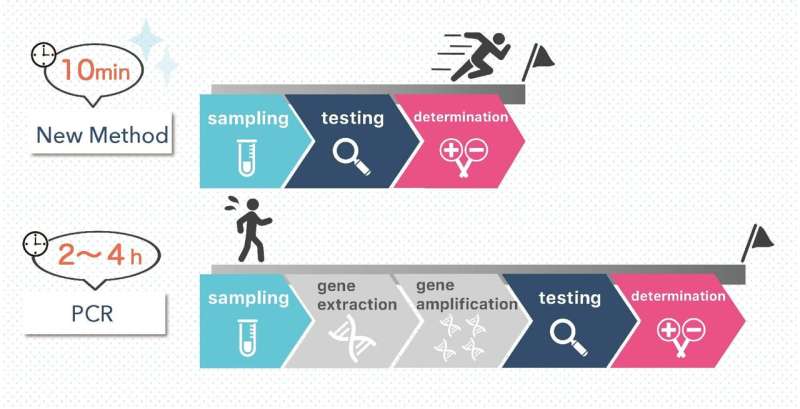A rapid, accurate way of testing for COVID-19 infection would be a big step in overcoming the virus’ hold over our society. Now, Japanese researchers have developed a promising solution: a novel platform that couples nanopore technology with artificial intelligence. The article, “High-precision rapid testing of omicron SARS-CoV-2 variants in clinical samples using AI-nanopore,” was published in Lab on a Chip .
What is a nanopore? A nanopore is a miniscule hole in a thin substrate, often a silicon wafer. A nanopore might range from several nanometers to several hundred nanometers in diameter—a scale small enough to work with SARS-CoV-2, the virus that causes COVID-19.
Kaoru Murakami, the study’s lead author, explains, “Our technology involves looking at changes in the electrical current as different materials are passed through tiny nanopores. With the use of artificial intelligence, we can understand the structure, volume, and surface charge of different materials, including viruses.”
SARS-CoV-2 is typical of many other RNA viruses in that it constantly mutates, thereby changing the properties of the virus—including infection rates and symptoms. One infamous mutation of the virus, the omicron variant, was first identified in November 2021 and is known for its ability to spread quickly. One of the greatest challenges for COVID-19 testing so far has been accurately determining the presence or absence of newly mutated variants in a sample.
Thus, the researchers first sought to demonstrate that their platform could detect differences between six different variants of SARS-CoV-2. Next, they investigated whether their platform could identify SARS-CoV-2 strains in 241 saliva samples, collected from 132 people infected with SARS-CoV-2 and 109 uninfected people.
Not only was the platform able to distinguish between SARS-CoV-2 variants, but it was also able to determine the presence of the omicron variant 100% of the time.
The researchers hypothesize that their AI-driven platform is detecting differences in the so-called spike proteins (also called S-proteins) that coat the surface of coronaviruses. These proteins, which tend to mutate very quickly, bind to host cell receptors and play a crucial role in penetrating host cells.
Until now, the gold standard for SARS-CoV-2 detection has been a method called RT-PCR (the reverse transcription-polymerase chain reaction test).
“Like RT-PCR, our AI-nanopore platform can detect coronavirus with high sensitivity and specificity. However, a major advantage of our nanopore system is that it is much less expensive and has the potential to measure a larger number of samples in a given period of time,” explains Masaaki Murakami, senior author.
The benefits of this system are not specific to SARS-CoV-2; other RNA viruses also tend to have high mutation rates, and so this platform could be used to detect viruses such as influenza. The new platform could even be rapidly adapted to test for the next newly emerged infectious disease.


